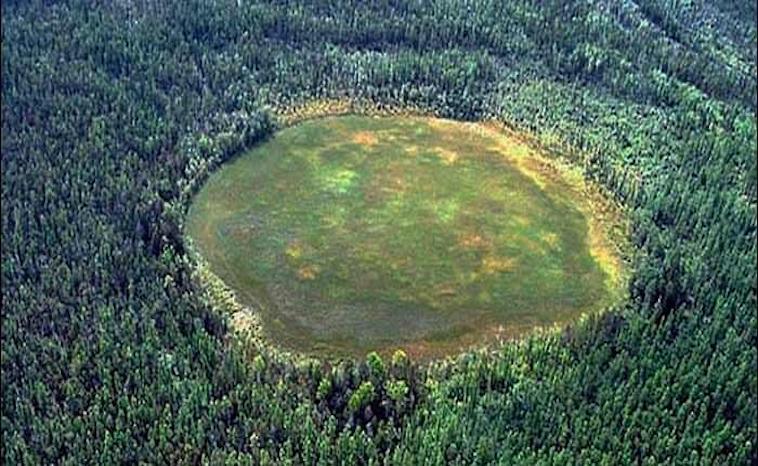Tunguska Asteroid Event of 1908

What caused a large portion of trees to fall across a section of Siberia in 1908? Read on to learn more about this mystery.
In June 1908, a massive explosion cleared a large portion of the forest near the Tunguska River in the eastern Siberia of Russia. For years people have speculated about the cause of the clearing. It became known as the Tunguska asteroid event. It is often referred to as the “largest impact event in recorded history,” even though no impact crater was found. Primitive technology at the time did not provide much in the way of an explanation. Today, researchers believe they know what cleared 80 million trees over an area of 2,150 km2 (830 sq mi) of the forest.
Tunguska Asteroid Event
Aside from the destructive force of a volcano, what else could explain the destruction of 80 million trees? Scientists have long suspected that an asteroid cleared the forest. Since the 1908 event, there have been an estimated 1,000 scholarly papers published about the Tunguska explosion. In 2013, a team of researchers published the results of an analysis of micro-samples. Samples came from a peat bog near the center of the affected area. Their conclusion showed fragments that may result from a meteor.
However, Siberian scientists studying the case argue another point. They believe that the Tunguska event was the result of a sizeable iron asteroid entering the Earth’s atmosphere. From there, it skimmed the planet and then shot back out into space.
The bold idea was based on mathematical models. These models explored different scenarios where asteroids of varying size, composition, and trajectory interacted with the Earth. Furthermore, researchers were able to rule out an icy ball and a rocky object as the culprits for the blast and, in turn, determined that it was most likely an iron asteroid.

Studies of the Tunguska Event
1. The ice body – a hypothesis floated by Russian researchers in the 1970s – was pretty simple to rule out. The heat generated by the speed required to obtain the estimated trajectory would have entirely melted the ice body before it reached the distance observational data suggests it covered.
1. The rocky body- another idea, too, would be less likely to survive. Meteors are thought to explode when air enters the body through small fractures in the meteorite. As a result, it causes a build-up of pressure as it flies through the air at high speed. Iron bodies are much more resistant to fragmentation than rocky ones.
According to the team’s calculations, the most likely culprit is an iron meteorite between 100 and 200 meters (320 to 650 feet) across. It flew 3,000 kilometers (1,800 miles) through the atmosphere. It would never have dropped below 11.2 kilometers per second (7 MPS) or an altitude of 11 kilometers.
This high velocity also explains the lack of iron debris. The object would be moving too fast and would be too hot to drop much. As a result, any mass loss would be through the sublimation of individual iron atoms. This would look exactly like normal terrestrial oxides.
“Within this version,” the researchers also noted, “we can explain optical effects associated with a strong dustiness of high layers of the atmosphere over Europe. This caused a bright glow of the night sky.”
Problems With The Idea
However, they admit that the idea does have a problem. For one, they “did not deal with the problem of the formation of a shockwave.” More research will need to happen to answer this question. For now, it appears they have a better idea of what happened during this event.
